A look back at Indiana conservation
Indiana is well-known as a conservation leader, which is in part due to
the strong collaboration that exists between Indiana’s conservation partners.
That was realized this week as conservationists from all across the state came
together and filled the Indianapolis Downtown Marriott for the 74th Annual
Indiana Soil and Water Conservation District (SWCD) Conference. This year’s theme was #VIP: Vision, Innovation and Partnership,
and was a great opportunity for Indiana’s conservation partners to gain
knowledge, share ideas, network and leave invigorated with a renewed vision for
the future.
However, this incredible partnership and becoming a conservation leader didn’t happen overnight. In fact, did you know that Indiana’s first conservation district was established in 1940 in Vanderburgh County? Back then, though, they were just called Soil Conservation Districts (“water” was later added to their names in the early 1960s).
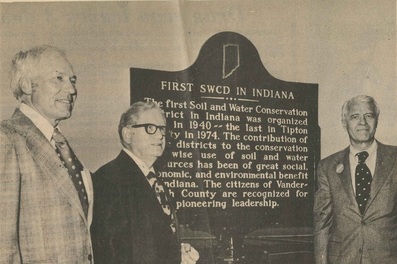
At that time, landowners had to petition to create SWCDs in their respective counties, a process modeled after federal legislation under President Roosevelt’s administration. Indiana’s district law also established the State Soil and Water Conservation Committee, now called the State Soil Conservation Board, to oversee all SWCDs in the state.
Most of these districts were established between 1945 and 1960; however, it wasn’t until 1974, when Tipton County officially joined the ranks, that districts had been established in all 92 counties – an exciting time in Indiana history.

Between the 1940s–1970s, as the conservation movement was really starting to take shape, the districts were mainly focused on recruiting landowners to become district cooperators. In doing so, the Soil Conservation Service, now called the Natural Resources Conservation Service, could work with them to develop conservation plans for reducing erosion and improving their land’s productive capacity. These plans primarily included crop rotations, structural erosion control practices, drainage improvements and liming.
Fast forward a decade, the focus started to shift and became geared more
towards helping landowners find ways to reduce runoff and off-site impacts of
sediment. This focus was realized in a statewide strategy, known as T by 2000, launched under Governor Bob
Orr’s administration. The strategy was developed over the course of two years,
with considerable support from a variety of organizations, and sought to reduce
erosion on each acre of land to its tolerable limit (T) or below and have all
off-site sedimentation controlled by application of best practical technology –
all by the year 2000, which is how the strategy got its name.
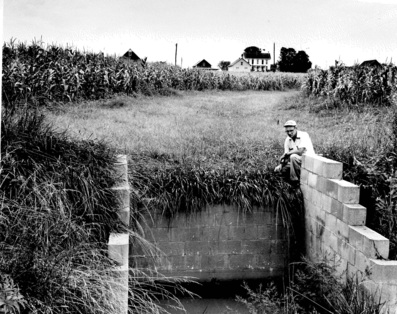
Today, SWCDs continue to help
Indiana residents to conserve land, water, forests, wildlife and related
natural resources that encompass our state's 23 million acres. As in the past, their mission is
to coordinate assistance from available sources – public and private,
local, state and federal – in an effort to develop locally driven
solutions to natural resource concerns.
Indiana's 92 SWCD supervisors represent over 450 volunteers across the state serving in elected or appointed positions on governing boards. In fact, Lt. Governor Suzanne Crouch, Indiana’s Secretary of Agriculture and Rural Development, served on the board in Vanderburgh County.
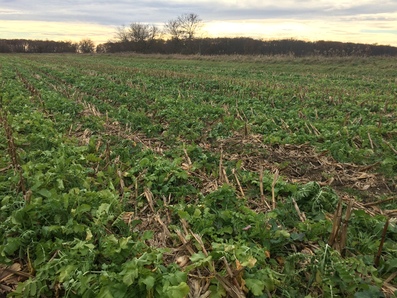
Moving forward, the future of conservation in
Indiana is bright and the potential of local districts is unlimited thanks to
the commitment from elected officials, individuals and due to continued support
for Indiana conservation and our 92 SWCDs.
To learn more about Indiana's conservation districts, please visit iaswcd.org.
Fantastic
Food Fest grows in second year
Indiana Grown vendors, celebrity chefs, exciting culinary events and great weather brought close to 10,000 consumers to the second annual Fantastic Food Fest at the Indiana State Fairgrounds.
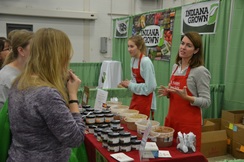 Nearly 50 Indiana Grown members were on hand to showcase their great products and share their story with enthusiastic customers – many of which attended the first Fantastic Food Fest. Members also got the chance to connect with retailers, restaurants and catering partners.
In addition to shopping, the Fest also featured demonstrations, cooking classes, workshops, competitions and presentations from local and celebrity chefs, like Alex Guarnaschelli and Loreal Gavin, and as an exciting new addition this year, many of these events featured recipes using Indiana Grown member products.
|
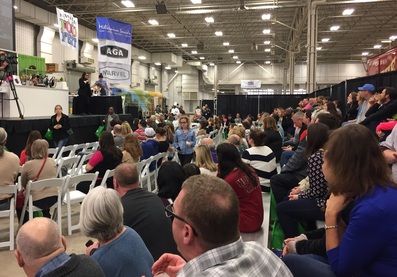
ISDA staff members were also on hand both days and met with the Indiana Grown producers and members of the public to share information about the program. On many occasions, consumers said they loved the idea of purchasing locally made products and enjoyed connecting with Indiana Grown members.
Planning has already begun for next year’s Fantastic Food Fest and dates for the third annual event will be posted in the future to www.FantasticFoodFest.com.
|